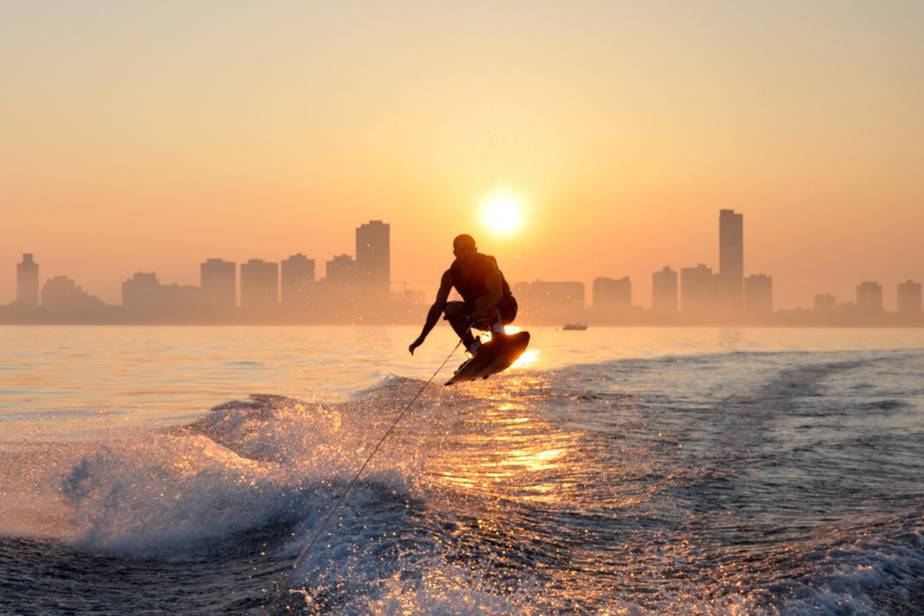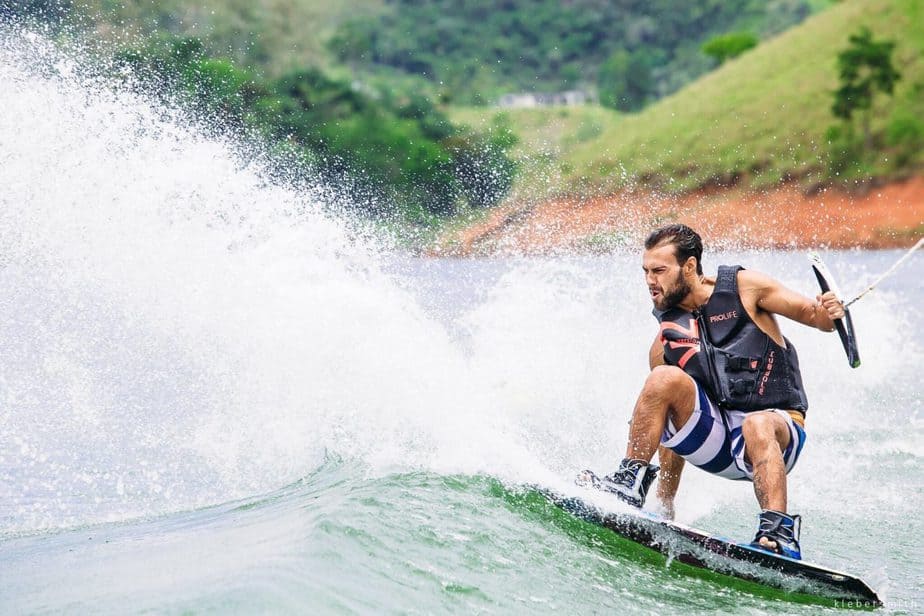Why Are Wakeboards So Expensive?
If you have been around wakeboarding for any length of time, you know there isn’t a lot of equipment you need to be able to wakeboard, but all the equipment is very expensive.
You need a board with bindings you like, a tow rope, and a wakeboard boat, or access to a cable park. Fortunately, the list is short, but everything from the tow rope to the wakeboard boat will hit your wallet hard.
If you are looking to get into wakeboarding, or you are in the market for a new board, you may be surprised by the cost of wakeboards – for instance, the Hyperlite Riot Nova has a MSRP of $900, for just the board without bindings or fins.
Even the less expensive and beginner boards can be pricey and have you wondering why they cost as much as they do and if they are worth the expense.
I have looked into the construction of, design, and the materials used in making wakeboards to answer this question.
Why Are Wakeboards So Expensive?
Why are wakeboards so expensive? In short, because there are several high-end components and building processes that go into making a wakeboard.
Looking at the finished product a wakeboard can look uncomplicated, nothing more than a shiny board with the bindings facing sideways. In reality, however, there is so much more to a wakeboard than meets the eye at first glance.
We are going to go over the design and the construction of wakeboards to understand why they cost as much as they do, and by the end, you will have a better understanding of why wakeboards can be expensive, and why the expense can be worth it.

What are wakeboards made of?
The basic construction of all wakeboards is generally the same, though there are a lot of different materials that can be used. The idea is to create a board that has a rigid core but still has some flexibility to glide across the water and create a smooth stable surface when landing tricks.
The general construction of all boards is the same, with the differentiation being the materials that are used and the design of the board. Wakeboarders have different riding styles and preferences creating a market for boards that cater to these preferences.
Some wakeboarders prefer a light-weight board, while others prefer a board that’s a little heavier. Some prefer a very rigid board, while others want their board to have a little more flexibility. There isn’t a wrong board, but the best board for you is the one you are the most comfortable riding.
The core of a wakeboard is where the rigidity comes from. The core is also where extra weight can be found. To construct a wakeboard, a mold is made and high-density polyurethane foam is injected into the mold.
At this point, you can see the general shape of the wakeboard. Depending on how rigid the wakeboard is supposed to be, sometimes extra material is added into the core.
The most common core materials are ABS (Acrylonitrile Butadiene Styrene) plastic, laminated wood, and aluminum. ABS plastic is strong, rigid, and resistant to damage from impact. It is also easy to inject and is a relatively inexpensive material to use.
Laminated wood is an easy material to use, readily available, and will create a slightly less rigid board than the ABS. Aluminum is sometimes used to create a rigid, light-weight wakeboard.
The aluminum core is typically in a honeycomb pattern to create even more rigidity. The polyurethane foam is injected around the core material, resulting in the completed core.
Once the core is formed, it is wrapped with a material to protect the core and add rigidity to specific areas of the board. Either fiberglass or graphite carbon sheeting are layered on the core to create a hard shell.
The layers of fiberglass or graphite carbon are then covered with epoxy. To keep everything in place and protect the core. The last part of the construction process is to add the top and bottom.
The top and bottom are made of either molded ABS plastic or acrylan that are put on the outside of the core and joined together. The top and bottom will provide the final shape for the wakeboard.
The bottom will have either channels or ridges to help the wakeboard go in a straight line and the right direction. Some boards will have very pronounced channels and ridges, while others are less intrusive.
The different designs and shapes of the board bottoms are meant to accommodate different riding styles and riding conditions.

Impact of Design and Components on Ride and Cost
When it comes to the design of a wakeboard, there are a few things to consider – rocker, binding styles, bottom design, and fin location and size. Each of these design components lends itself to a specific riding style and riding preferences.
When you are looking for a board, especially if you are just starting, you may not know exactly what you like, and some boards are more suited for beginners in this case.
Part of the reason wakeboards cost as much as they do is because of the individuality of the designs and the research and development behind coming up with the best design for different riding styles.
Let’s go over the design components to understand how each component affects the wakeboard.
Rocker refers to the curvature of the board. Wakeboards are not completely flat, rather they have a slight curve that brings the toe and heel of the board slightly higher than the bottom of the board.
There are several reasons for a wakeboard to have rocker and there are options when it comes to the type and amount of rocker a wakeboard has. Rocker impacts how soft or hard the landing is, how much lift you can get off the wake, and how easily the board will spin.
There are two types of rocker – three-stage rocker and continuous rocker, with a few subtypes as well. As the name implies, continuous rocker is a continuous curve from toe to heel.
A three-stage rocker, on the other hand, splits the board into three sections (nose, middle and tail). With a three-stage rocker, the middle is generally flatter with the nose and tail holding most of the curve for the board.
The main subtypes are blended three-stage, subtle three-stage, and abrupt continuous. In addition to the style of rocker, there are also boards with more, or less, rocker than other boards. Usually, the rocker is anywhere from 2” to 2.5”.
The bindings tend to come in three main types – open-toe, closed-toe, and system. Each binding type has distinct advantages and disadvantages that the rider has to weigh the pros and cons of before deciding what binding style is right for them.
On less expensive and beginner boards, you will likely find an open-toe binding. These bindings are easy to get into, provide the support you need and are usually one-size-fits-all.
This is great if you are just starting out or if you are sharing a wakeboard with multiple people. Closed-toe bindings tend to have more support around the ankle and allow you to control the board more accurately because of the extra support.
These bindings are a little harder to get into and are more fitted to a specific foot size that the more universal open-toed binding. System bindings utilize technology found in snowboard boots – there is a separate boot and binding and the boot screws into the binding that is on the wakeboard.
One of the easiest system bindings to get into is made by CWB. It incorporates a hinge-style that opens wide so you can put your foot in easily, then close with the flip of a lever to give you all the support you need.
This is revolutionary because it eliminates the need to you a lubricant to slide your foot into the bindings. Quality bindings do not come cheap. In some cases, a good set of bindings can cost as much, or more, than an inexpensive wakeboard.
Fins and bottom design are both used to help with stability in the water. The idea is that the ridges and channels that are incorporated into the bottom design, along with the fins on the heel and tow, help the wakeboard track in the water, keeping the board going in a straight line.
The fins dig into the water and help to turn the board after landing and adding more stability for the rider. The fins also help get the board going in the right direction during deep water starts.
Fin length and bottom design of a wakeboard follow personal preference and the type of riding you’ll be doing. More aggressive bottom design and longer fins are better for doing more aerial tricks because they help when landing.
On the other hand, a less aggressive bottom design and shorter fins are better for doing surface tricks because they allow the board to spin more easily.
Final Thoughts
When it comes to the cost of a wakeboard, it’s easy to experience sticker shock. While there are more cost-effective boards, there are also a lot of boards that end up being very expensive.
The material used in building and your choice of components will directly impact the cost of the wakeboard. An aluminum core board will be more expensive than a wood core or ABS core and a system binding will be more expensive than an open-toe binding.
If you are a serious wakeboarder, buying a wakeboard that fits your riding style and preferences will give you the control and confidence you need to continue to push yourself and grow as a rider.



